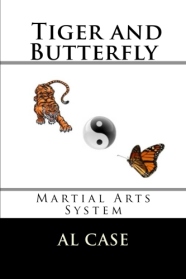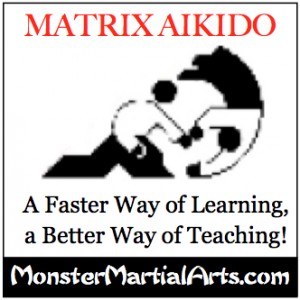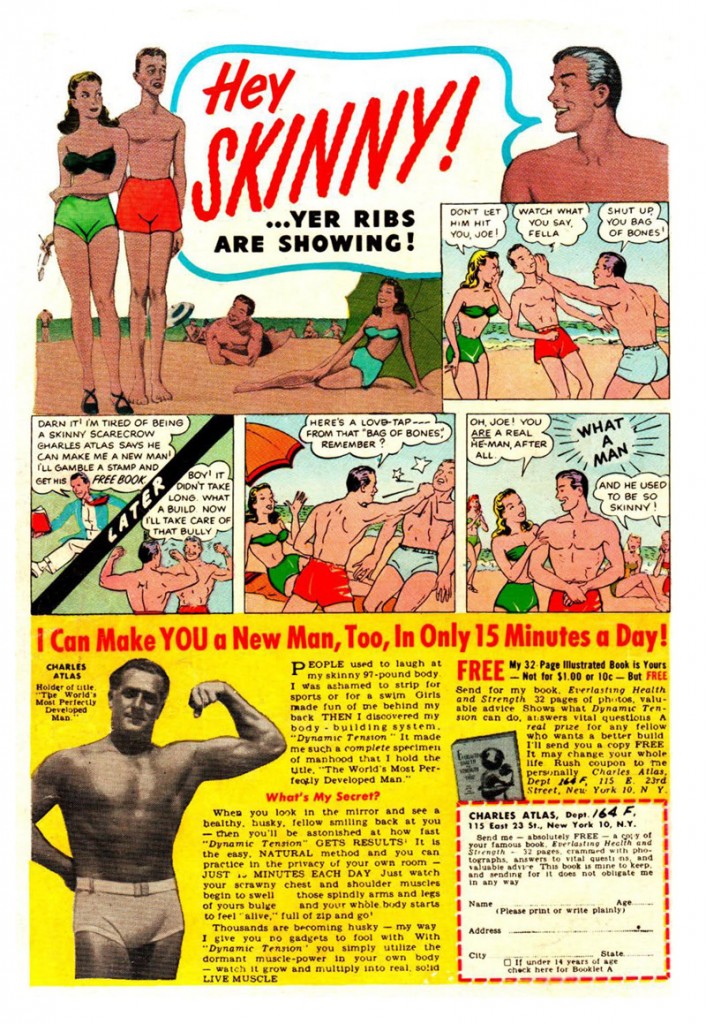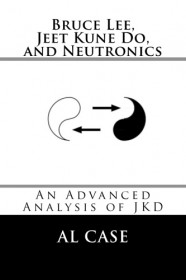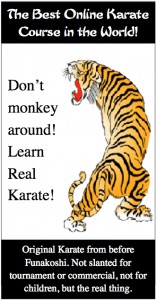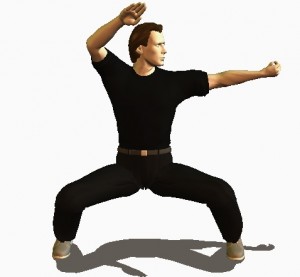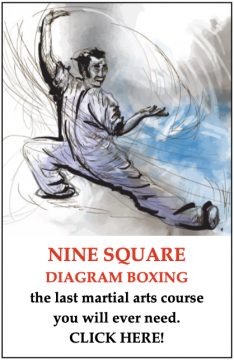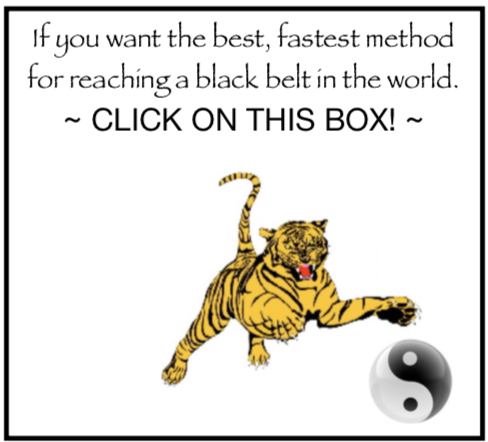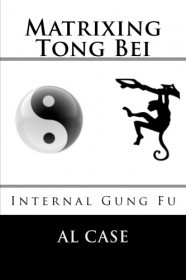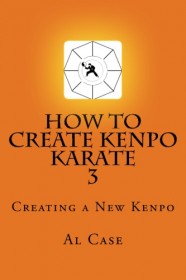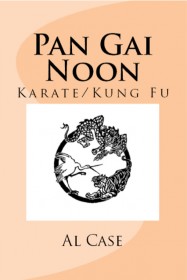Newsletter 805
To Promise a Fight
Beat Google!
Sign up for the newsletter at
https://alcase.wordpress.com
Gorgeous day.
Absolutely gorgeous.
And that means it is an absolutely gorgeous day for a work out.
So get going!
Was teaching this morning.
We were doing Promised Fights,
and my partner was grimacing,
and finally backed off.
“Ow,” he said.
And we got into a long discussion.
Heck,
he was hurting,
I had to let him recover,
give him some data,
and then hurt him some more.
Right?
First,
I started out with the old
‘Do it a form a thousand times and you know it.
Do it ten thousand times and you’ve mastered it.’
My student did exactly the right thing,
he said,
‘So if I do it 20 times a day,
then in fifty days…’
“Yep,” I said.
“You could know it.
You could be expert in 2 months.
But you have to do it right.
You have to understand the alignment,
how the feet work and why,
and you have to know the Promised Fights…
otherwise you could do it forever and not know it.”
Second,
we went into proper body alignment,
which is covered on the Master Instructor Course,
and how the feet must align properly,
and how the particular form we were doing had to be done
to make this all work.
I ended up saying,
“align your body,
make it a single unit,
then he won’t hit your body parts,
he will hit a single, integrated unit,
and it won’t hurt you.
Energy flows through a body that is a single unit,
it doesn’t flow through body parts used in individual fashion.
This is especially important in a Promised Fight.”
And,
came the look I had been waiting for.
I had been using the term Promised Fight,
and I knew he would eventually ask about it.
“What is a Promised Fight?”
A Promised Fight,
or a Promise Fight,
is a piece of the form applied.
A form Application.
It is a self defense movement.
It is bunkai.
It is the working part of the form.
But,
it is more.
In fact,
if a person doesn’t understand what I am about to tell you,
he/she is not doing karate.
They are just fighting themselves.
I asked my instructor what a Promised Fight was,
and he said,
‘The Promise of a Fight.’
And,
while the study of PFs gave great abilities,
and the answer he gave me was correct,
it was terribly incomplete.
To understand what a Promised Fight is
I need you to look up the word ‘Postulate.’
Look it up for yourself,
get all the nuances,
where it came from,
and all that,
but for this newsletter,
the short and inadequate version is this:
suggest or assume the existence, fact, or truth of (something) as a basis for reasoning, discussion, or belief
Assume existence,
put forth the truth,
as a basis for belief.
If you understand the hint here,
you should be diving for a big old Oxford Dictionary,
wanting to know why a simple karate move
becomes the basis for truth in this universe.
So let me break it down a bit,
from the viewpoint of 50 years of training.
A postulate is a thought,
which if worked on,
becomes true.
Worked on,
as continually done in a work out.
As in a piece of the form,
practiced again and again and again.
Now,
let me back up a bit,
a form is a circuit,
a pattern of moves that you practice and practice
until you just do it without thinking about it.
You strengthen the body,
you remember the applications,
you get light and quick,
and all those sorts of things.
When you do a piece of the form,
over and over and over,
you condense the circuit,
and you get rid of thought,
and suddenly there is nothing but the move.
Somebody punches,
and you don’t exist,
you just track the incoming,
and the Promise Fight,
the postulate of moves,
pops out of you.
And it works.
You punch him,
and he falls down.
And he doesn’t understand what hit him.
But here is the truth of it all…
a thought hit him.
A Postulate of thought hit him.
A Promise Fight,
clean and simple,
without distractive thoughts,
hit him.
And there is nothing purer in this universe.
Now,
I am always so busy trying to get people to understand,
offering all sorts of methods,
that i sometimes forget to go into this factor.
BUT,
in Matrix Karate there is the Matrix of blocks.
These are like mini-Promise Fights.
Very important to get these,
to understand them,
it is important to learn the small PFs
before you get to the big ones.
The big ones are on Temple Karate.
There isn’t talk of a matrix there,
because it is assumed you have done the groundwork of Matrixing first.
And the form applications are VERY pure Promised Fights.
They REALLY result in a zen frame of mind,
and the ability to hit somebody with a thought.
If you get Temple Karate
and you haven’t done Matrix Karate,
then you are taking the long route.
It will take you years,
and as distractions mount,
you can be knocked off the path
and never get there.
So you should do Matrix Karate,
work on the Matrix of Blocks,
make inroads and discover what a PF is.
And,
you can always take the pieces of the form,
they are pretty obvious,
and work on them to make real Promised Fights.
Then you do Temple Karate,
get into the classical forms,
and really go to town on the Promised Fights.
Matrix Karate is pretty simple,
it presents the movements that are pure karate,
no distractions from other arts.
It aligns you,
and sets you up for the broader moves of Temple Karate.
It is a real Closed Combat System.
You can do it by itself,
or you can do it,
then move into the classical,
and see what kinds of things
the old guys who came before us were into.
Temple Karate is a larger assortment of tricks,
it broadens the education,
and digs you to new depths.
Anyway,
that is the story on Promised Fights.
Dig ‘em…they are the real zen of Martial Arts.
Here’s the link for Temple,
if you have already done Matrix Karate.
You can just go to MonsterMartialArts and find Matrix Karate,
it is one of the first arts presented on the home page.
http://monstermartialarts.com/martial-arts/temple-karate/
Now,
have a great work out,
and schedule yourself for twenty times a day,
and send me your wins in two months.
Have a great work out!
Al
http://monstermartialarts.com/martial-arts/temple-karate/
Don’t forget to sign up for the newsletter at
https://alcase.wordpress.com
http://www.amazon.com/Matrixing-Tong-Bei-Internal-Gung/dp/1507869290/ref=sr_1_1?ie=UTF8&qid=1423678613&sr=8-1&keywords=tong+bei
Tell your friends it's FREE!
Like this:
Like Loading...
